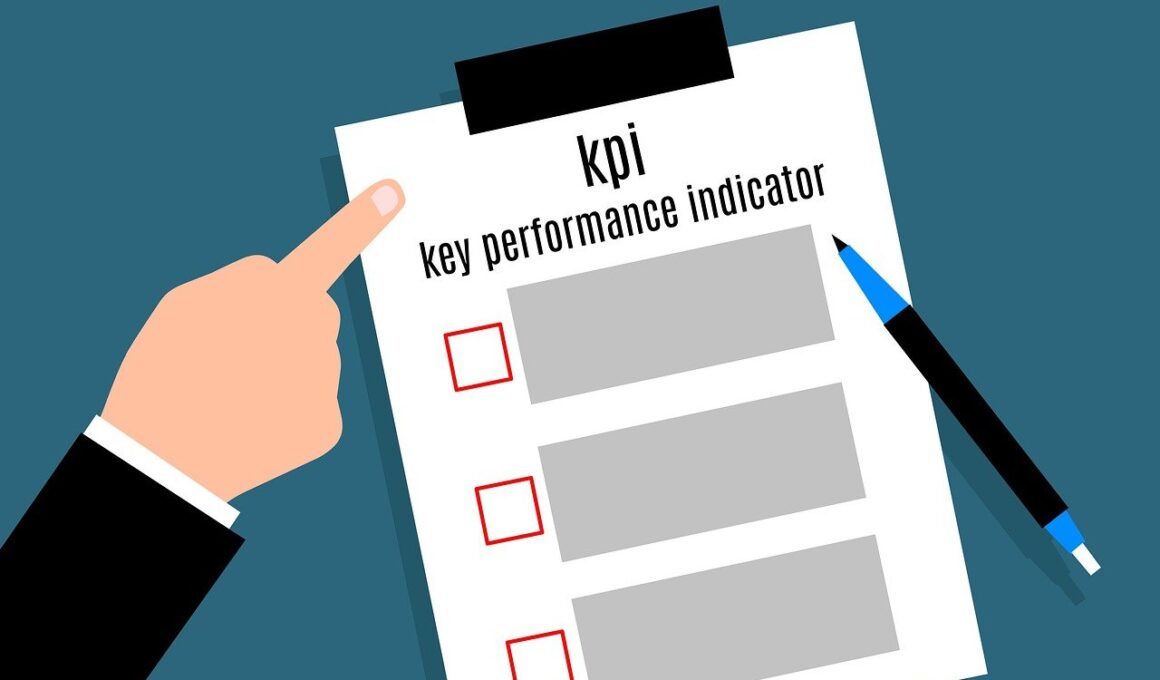Aligning Incentive Programs with Performance Goals
In today’s fast-paced business landscape, effective leadership demands a strategic approach to performance management. One crucial aspect is aligning incentive programs with performance goals. Organizations seeking to enhance employee motivation and productivity must ensure that their reward structures reflect both individual and organizational objectives. By implementing well-designed incentive programs, companies can drive employees to achieve defined performance expectations. Not only does this create a culture of accountability, but it also fosters overall business growth. According to recent studies, organizations that link incentives to performance metrics experience higher employee engagement levels, leading to lower turnover rates, increased productivity, and higher morale. However, it’s important to tailor these programs to specific roles within the organization, ensuring relevance. The effectiveness of an incentive program hinges on clearly communicated goals and measurable key performance indicators (KPIs). When employees understand the criteria for rewards, they are more likely to perform at their best. Through thoughtful assessment and adjustments, businesses can continually refine these programs to maximize their impact on performance and individual motivation, thereby ensuring consistency in achieving corporate aims. Companies that excel in this area set themselves apart in the competitive landscape.
Performance management is not solely about measuring outcomes but also about fostering an environment where employees feel motivated to achieve their best work. Incentive programs play a pivotal role in this. By aligning these rewards with specific performance goals, leaders can create a compelling reason for employees to strive for excellence. It’s essential to recognize that not all incentives are financial. Creative non-monetary incentives can also significantly affect motivation. For instance, public recognition, professional development opportunities, or additional time-off can be powerful motivators. Organizations should consider the unique needs and values of their workforce when designing these programs. Flexibility is key; what works for one employee may not resonate with another. A successful program reflects the diversity of employee motivations. Measuring progress against assigned performance benchmarks allows organizations to identify which aspects of their incentive programs are working and which need re-evaluation. Regular feedback from employees can provide valuable insights and help refine these strategies. Ultimately, the goal of performance management is to align individual aspirations with organizational objectives, creating a win-win environment where both the employee and the company can thrive together.
To achieve successful alignment between incentive programs and performance goals, organizations must implement a systematic approach. First and foremost, clear goals should be established. These goals must be specific, measurable, achievable, relevant, and time-bound (SMART). When employees understand their targets, they can align their efforts accordingly. Next, organizations need to communicate the incentive programs effectively. Clear communication ensures that employees comprehend the criteria for rewards and the benefits of exceeding performance targets. Training sessions and workshops can enhance their understanding, providing a platform for clarifying doubts. Additionally, the organization should continuously monitor and assess the effectiveness of its performance management systems. Data analytics tools can offer insights into employee performance trends, helping leaders make data-driven decisions. Furthermore, engaging employees in the feedback process can illuminate areas where programs may need adjustments. This collaborative effort goes beyond mere tactical adjustments and fosters a culture of shared ownership among employees. Lastly, rewarding accomplishments in real-time rather than waiting for annual reviews encourages ongoing engagement with performance goals and strengthens the alignment between individual effort and desired outcomes.
Building a Culture of Recognition
Incentive programs thrive in organizations that promote a culture of recognition and appreciation. Leaders must prioritize creating an environment where employees feel acknowledged for their contributions. This culture of recognition enhances the alignment of incentives with performance goals, leading to improved employee satisfaction and performance. Celebrating small wins in addition to significant milestones can have a profound impact on morale. This acknowledgment motivates employees to excel by reinforcing the idea that their efforts are valued. Peer recognition programs can also enhance this culture by allowing colleagues to celebrate each other’s achievements. Empowering employees to commend one another fosters teamwork and building strong relationships within the workplace. Moreover, organizations can utilize technology to streamline recognition processes, making it easier to highlight achievements through platforms and tools designed for this purpose. Regularly featuring success stories in company communications further embeds the culture of recognition. When employees see their colleagues being recognized, they are more likely to strive for similar acknowledgment. This proactive approach creates an engaged workforce committed to achieving performance goals collectively and reinforces the link between incentives and results. Ultimately, everyone benefits from this cohesive effort toward success.
Effective performance management requires constant evaluation and evolution of incentive programs. Regularly reviewing these programs helps organizations to adapt to their changing landscape. Market trends and employee expectations evolve, and companies must remain responsive to these shifts. This adaptability is vital for sustaining motivation and engagement. Leaders should collect data and feedback on employee perceptions of the current incentive structures and their effectiveness. Surveys and one-on-one interviews can provide valuable insights into what employees truly value and find motivating. Furthermore, analyzing performance data can reveal trends, allowing leaders to identify successful strategies or areas needing improvement. Integrating employee feedback into the evaluation process creates a more inclusive environment, empowering employees and enhancing overall performance management. A data-driven approach ensures decisions are based on empirical evidence rather than assumptions. Additionally, being open to experimenting with new ideas can yield innovative ways to enhance performance incentives. Organizations that frequently iterate on their programs, reassess criteria, and adapt to feedback are more likely to maintain high levels of engagement and performance in their teams. This commitment to continuous improvement fosters a culture of excellence and achievement throughout the organization.
Incentive programs should not be treated as static or one-size-fits-all solutions. They must be flexible enough to adjust to both individual and organizational growth. Organizations will find they need to implement periodic reviews to ensure that the incentives remain relevant. Performance metrics should reflect not only the business’s long-term goals but also emerging trends within the sector. By integrating these insights, leaders can devise incentive structures that not only reward past achievements but also encourage strategic behaviors leading to future successes. Engaging employees in this dialogue can also yield insightful feedback that enriches the development of the programs. Workshops and brainstorming sessions encourage a collaborative spirit, fostering a sense of community within teams. Furthermore, leveraging technology facilitates real-time tracking of performance metrics and progress against goals. Employees find such tools helpful as they keep them aware of how close they are to achieving their incentives. This ongoing awareness builds anticipation and excitement around performance goals, dynamically linking personal growth to organizational success. In this manner, effective performance management thrives, enabling employees to stay motivated and aligned with the broader objectives of the organization.
Final Thoughts on Incentive Program Alignment
Aligning incentive programs with performance goals is vital for building an engaged and high-performing workforce. Leaders must approach this process with strategic intention, contemplating numerous elements that contribute to success. Understanding the diverse motivations of employees is instrumental in crafting reward systems that resonate with their aspirations. Moreover, effective communication plays a crucial role in establishing a transparent connection between performance objectives and incentives. Continuous assessment and willingness to adapt programs based on feedback and evolving goals not only keeps the workforce engaged but also enhances overall business performance. Staying attuned to industry trends fosters a competitive edge in creating compelling incentive programs that attract and retain top talent. A robust culture of recognition combined with systematic monitoring of incentive effectiveness builds a foundation for sustainable performance management. Ultimately, organizations that prioritize alignment not only achieve their immediate goals but also cultivate a thriving workplace where employees feel valued, engaged, and motivated to contribute. Successful implementation drives progress and creates an environment where innovation, teamwork, and personal development flourish, leading to long-term success.
Successful performance management integrates comprehensive training and development opportunities alongside incentive programs. By investing in employees’ growth, organizations demonstrate their commitment to helping individuals achieve their professional aspirations. This not only enhances the effectiveness of incentives but also promotes employee loyalty and retention. Training programs should be designed to equip employees with the skills needed to meet performance goals effectively. Providing resources such as coaching and mentoring creates avenues for personal development, inspiring employees to reach their full potential. Organizations can also create accountability structures, ensuring that employees have the necessary support as they strive for higher performance. Furthermore, aligning training initiatives with performance metrics fosters a cohesive approach to performance management, ensuring that both training and incentive programs are directed towards organizational objectives. Creating safe spaces for feedback and expression further empowers employees, allowing them to voice barriers hindering their performance. This culture of support leads to sustained motivation and engagement among team members, resulting in higher productivity and overall employee satisfaction. Emphasizing growth in conjunction with performance goals illustrates a long-term investment in the workforce, leading to measurable returns for the organization.


